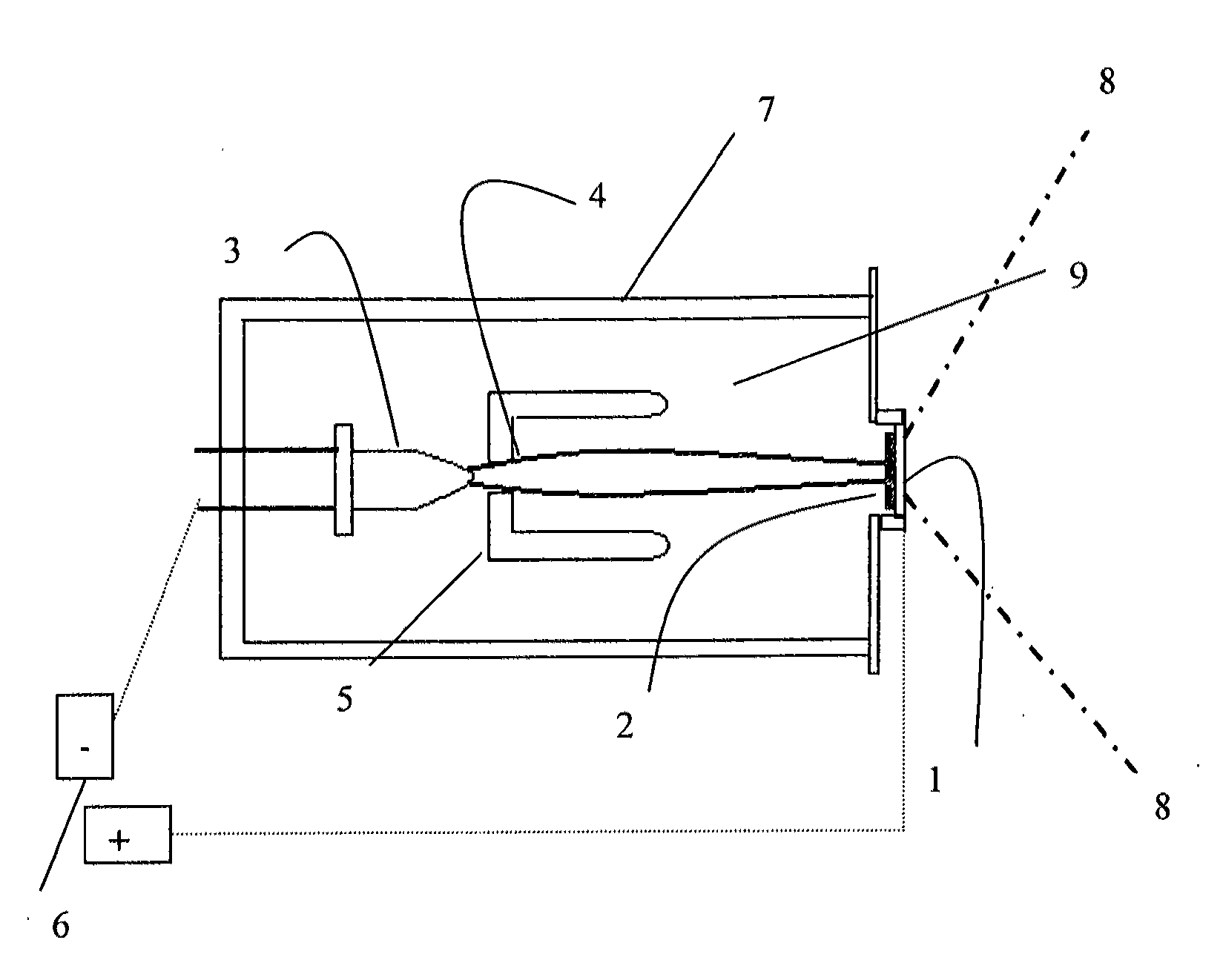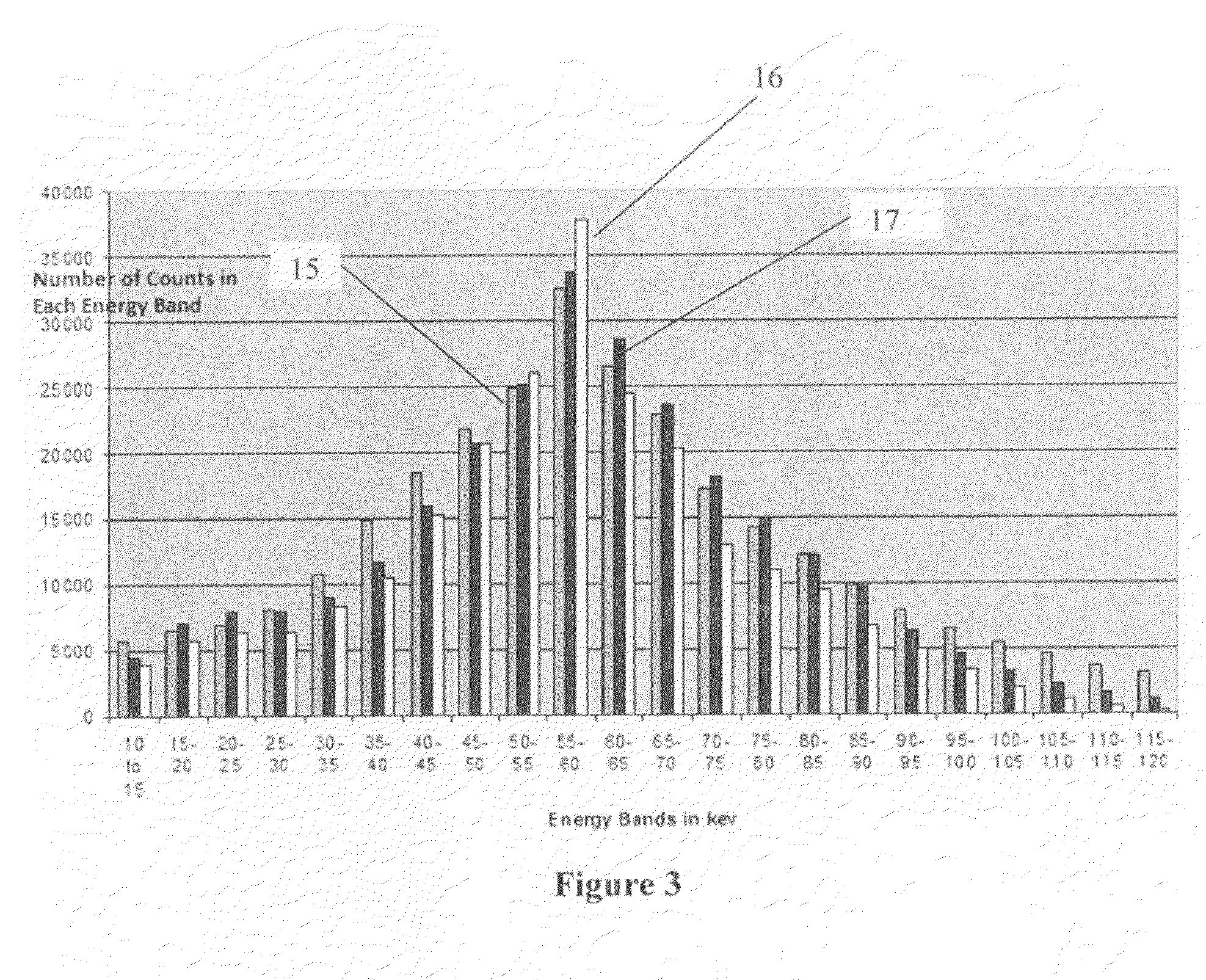Thick targets for transmission x-ray tubes
a technology of transmission x-ray and target, which is applied in the direction of x-ray tube target materials, tomography, instruments, etc., can solve the problems of large average number of collisions experienced by an electron until it is effectively stopped, too much dose to patients in medical x-rays, and unsatisfactory effect of x-rays
- Summary
- Abstract
- Description
- Claims
- Application Information
AI Technical Summary
Benefits of technology
Problems solved by technology
Method used
Image
Examples
Embodiment Construction
[0031]Open transmission tubes are typically used for imaging of electronic circuits as well as other high-resolution applications and may alternatively be used as the x-ray source when high multiplication factors are required of the object's image. Closed tubes are sealed with a vacuum whereas open or “pumped down” tubes have a vacuum pump continuously attached drawing a vacuum as the tube is used usually to allow for frequent replacement of tube parts which tend to fail in operation. For purposes of this invention transmission tubes include both open and closed transmission type tubes except as otherwise stated.
[0032]Unless otherwise specified x-ray tube spectral data was taken with an Amptek Model XR-100 with a CdTe sensor 1 mm thick and 10 mils of Be filter. The sensor was placed at a distance of 1 meter from the x-ray tube and a tungsten collimator with a collimator hole of 100 μM diameter placed in front of the sensor. Various tube currents and exposure times were used but comp...
PUM
| Property | Measurement | Unit |
|---|---|---|
| thickness | aaaaa | aaaaa |
| thickness | aaaaa | aaaaa |
| thick | aaaaa | aaaaa |
Abstract
Description
Claims
Application Information
 Login to View More
Login to View More - R&D
- Intellectual Property
- Life Sciences
- Materials
- Tech Scout
- Unparalleled Data Quality
- Higher Quality Content
- 60% Fewer Hallucinations
Browse by: Latest US Patents, China's latest patents, Technical Efficacy Thesaurus, Application Domain, Technology Topic, Popular Technical Reports.
© 2025 PatSnap. All rights reserved.Legal|Privacy policy|Modern Slavery Act Transparency Statement|Sitemap|About US| Contact US: help@patsnap.com



